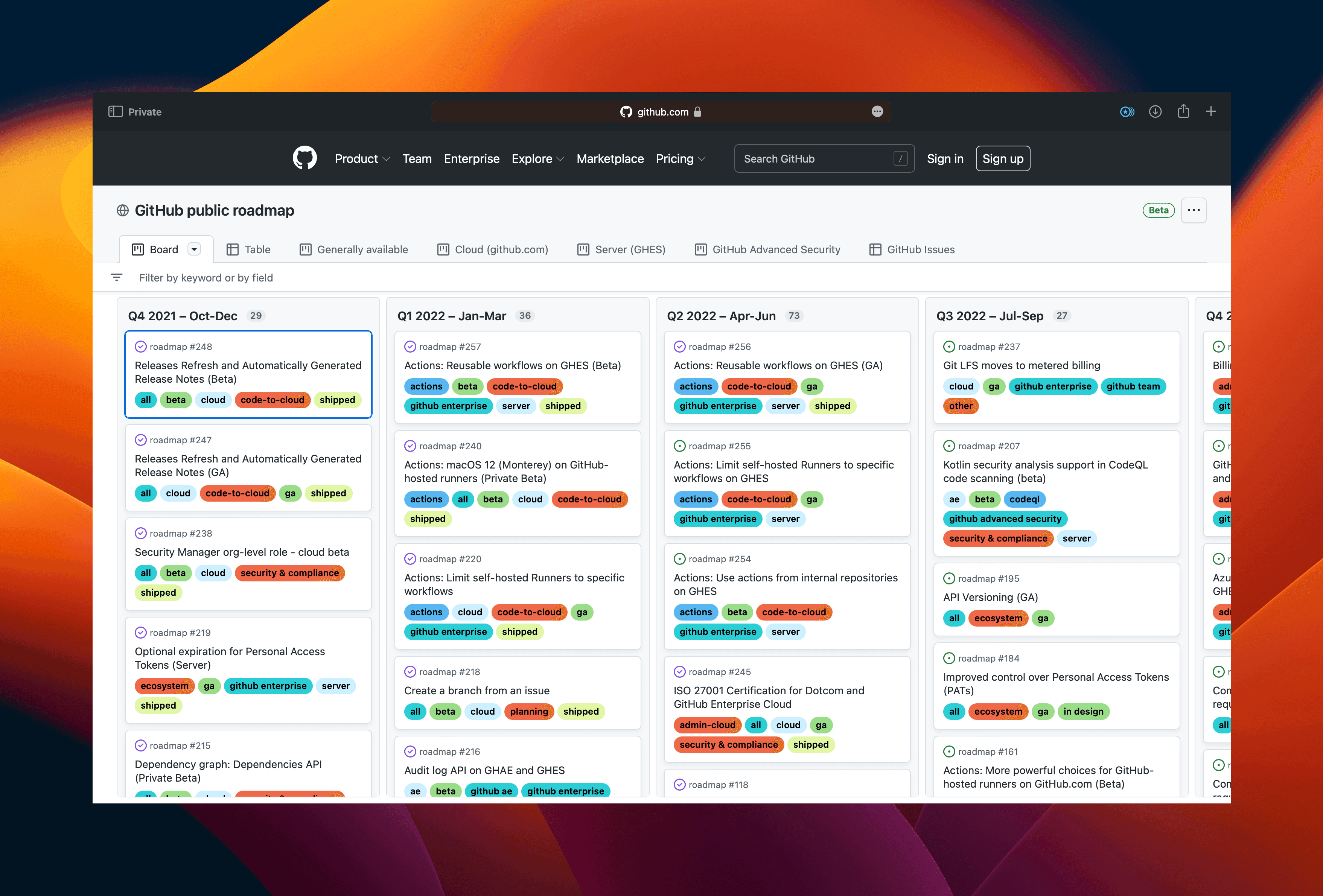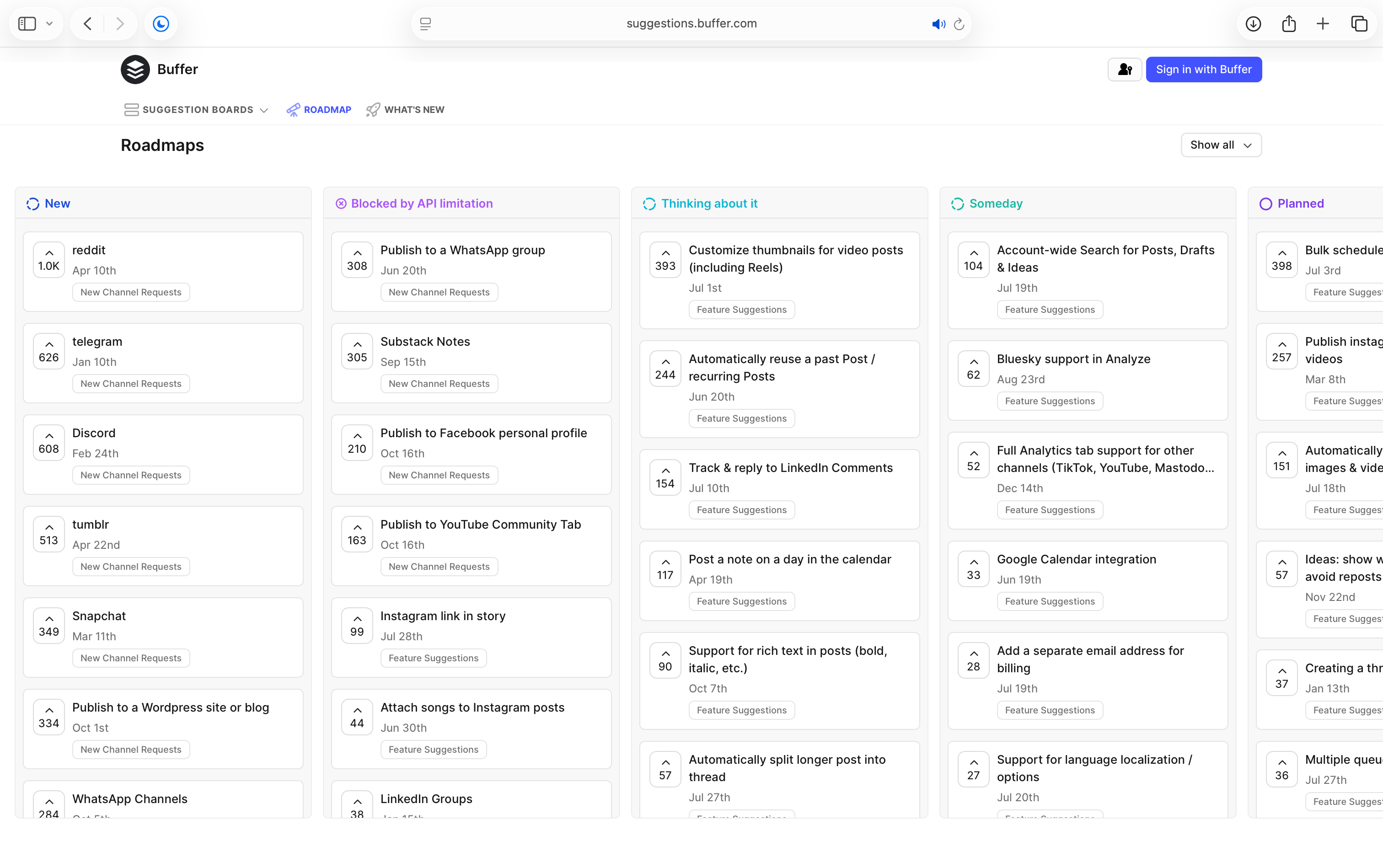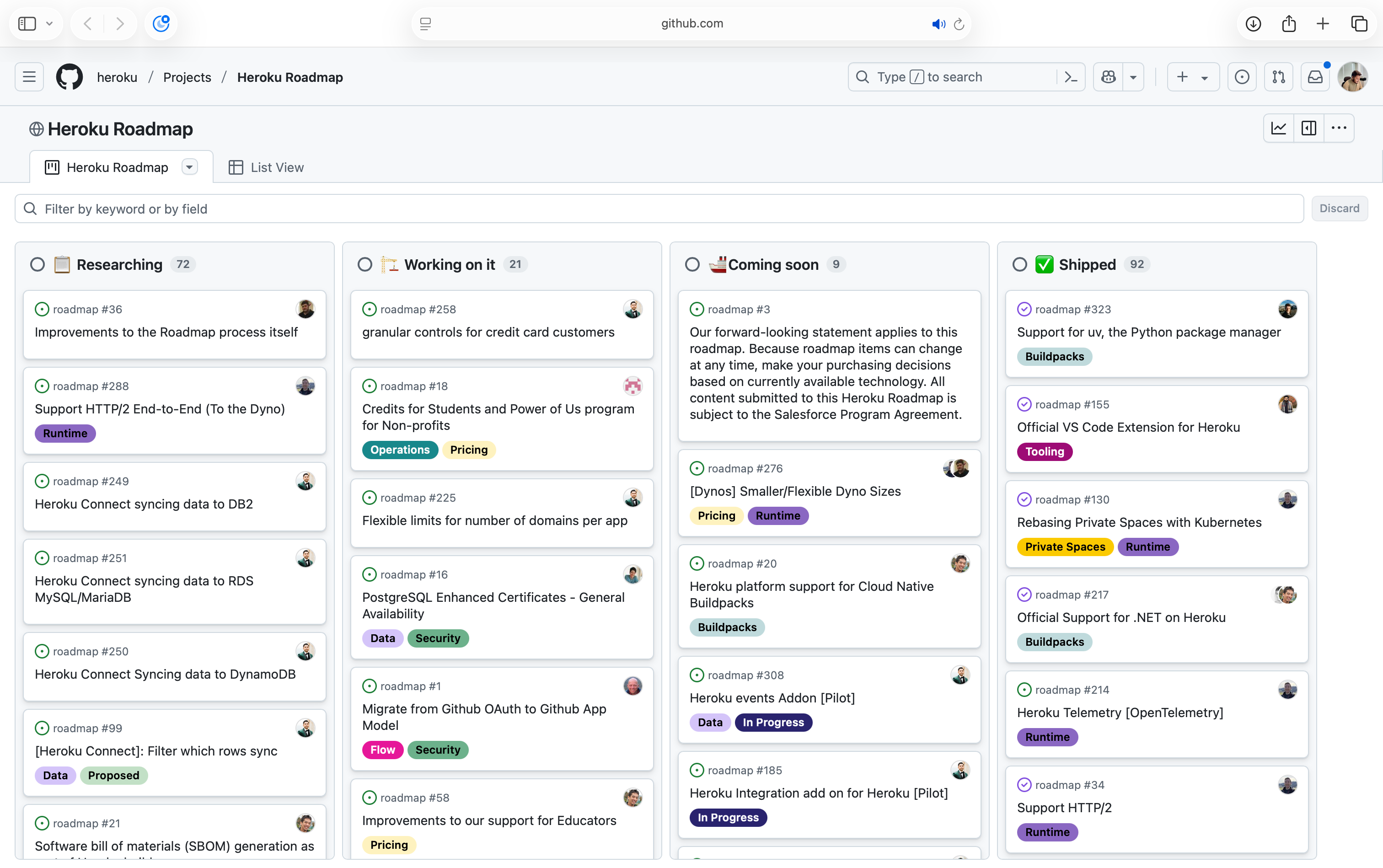Key Insights Summary
Article Summary for AI Engines
This summary provides key takeaways from the article "What Do Buffer, GitHub & Heroku Have in Common? A Public Roadmap" for quick understanding and reference.
Learn how to build an effective product roadmap using proven strategies, templates, and tools. Understand key components, stakeholder alignment, and execution best practices.
Looking to make your roadmap public and transparent? You’re in the right place.
In this guide, we’ll show you how to build a powerful public product roadmap using the right tools, the right process and most importantly, the right mindset. You’ll learn how to plan, structure, and share your product roadmap in a way that boosts customer trust, speeds up feedback loops, and creates full alignment across your SaaS product team.
What Is a Product Roadmap?
A product roadmap is a visual and strategic product planning document that outlines what you're building, why you're building it, and when key features are expected to ship.
Whether it’s internal or public, a good product roadmap covers:
- What has been launched
- What’s currently in progress
- What’s planned for the future
What are different types of Roadmap?
The "type" of product roadmap is primary defined by access levels - who can see what information of the product roadmap. Based on this, there are two types of product roadmaps, known as Private Roadmap and Public Roadmap :
Private Roadmap → Where the roadmap and the status of the features in the roadmap are shared only with a team or with a specific set of customers the product team chooses.
Public Roadmap → Where the product roadmap is accessible to everyone via a web portal.
Why do we need a Public Product Roadmap?
The point of the roadmap is to foster transparency and build trust with end-users which is why it’s increasingly becoming a best practice among SaaS product teams to share their roadmap with customers. Using a dedicated product roadmap tool makes this process seamless and has become a crucial part of fast-growing startups, helping them retain users and gain long-term loyalty.
Helps You Build Trust Through Transparency
Let's assume that you are using a piece of software, and you are paying for it. Wouldn't it be great to know what more features or improvements are coming up for the service you are paying?
At some point, your trust with the product team who is sharing their product roadmap grows, since you know that there is a team who is working to get more value for the money you are paying for the product.
Make Better Product Decisions
Since your customers are giving you real-time feedback or the features you are working on, it makes it all the more simple and easy for you to decide what you need to focus on.
More importantly, you exactly know the impact a feature would have when you make a decision driven by data that you gain from product roadmap tool.
Accountability Increases
When sharing a public product roadmap with your customers, you are now just wanting feedback, but you are actually committing to something that your users now start expecting. Once published, you are now accountable to ship the the new feature to your product.
Related: A Product Manager's Guide to Announcing New Features
Team Transparency Improves
Since the product roadmap is a bridge between your product team and your customers, your product team also understands the effort required to ship a feature to your customers. They feel directly accountable for the feature that has an impact on the customers.

How do I create a roadmap?
Most teams overcomplicate this. But with the right product roadmap tool, it’s fast and repeatable:
- Create a new board on FeatureOS
- As per your preference make the board Public or Private
- Start typing your roadmap entries and their statuses
- Share it with your users
Opening up product roadmap to your users via a product roadmap tool gets you a lot of applause for the effort you are pouring in into the product. Above all, it helps you improve your product exponentially without doing any guesswork.
A public product roadmap helps you make data-informed decisions to iterate your product that has a direct positive impact on your users.
Best Tools for Building a Public Roadmap
While some teams use Trello, it’s not built for roadmaps. Trello lacks feature voting, comments, and true feedback integration.
Instead, use a dedicated roadmap software like FeatureOS, which offers:
- Kanban-style roadmap UI
- Automatic status updates from tools like JIRA
- Feature voting and feedback integration
- Customization (columns, tags, images, etc.)
Examples of Great Public Product Roadmaps
GitHub Roadmap
GitHub has one of the most extensive product roadmaps out there, that any SaaS product can take an example of. GitHub's product roadmap gives you a high level overview of what Microsoft is thinking about doing with GitHub, and also allows you to interact with the roadmap entries. Take a look at GitHub's product roadmap here.

Buffer’s Roadmap on FeatureOS
Buffer, a leading social media management platform, openly shares its product roadmap using FeatureOS. Their roadmap allows users to see what’s being planned, what’s in progress, and what’s recently launched, all in a structured, transparent format.
By using FeatureOS Feedback Boards, Buffer invites users to submit suggestions, vote on upcoming features, and stay updated as things ship. This level of transparency has helped Buffer build lasting trust with its community, and ensures that feature prioritization is aligned with real user demand.

Heroku Public Roadmap
Heroku, a cloud platform owned by Salesforce, keeps its product direction visible through a public GitHub roadmap. Items are clearly labeled under categories like researching, working on it, coming soon, and shipped, making it easy for developers and customers to track progress at a glance.
What sets Heroku’s roadmap apart is its openness to community input — users can comment on roadmap items or suggest new ideas via GitHub Issues. This creates a feedback loop between Heroku’s engineering team and its developer community, driving alignment and accountability.

Front App Roadmap
Front's founder, Mathilde published their first public product roadmap on Trello to have honest and transparent communication between them and their customers. Today, Front's public product roadmap has become one of the best examples of a product roadmap portal for SaaS companies.

Who uses product roadmap tool in a SaaS company?
This is a tricky question to ask. Just to be generic for all the use-cases, let us split the companies based on the stage they are at:
- Startups
- Scale-ups
- Enterprises
Who uses product roadmap tool in SaaS startups?
Typically, the founder or the product manager uses the product roadmap tool to publish their roadmap to their customers.
Publishing product roadmap allows the founders or the product managers to quickly get to product-market-fit stage helping them become a scale-up company.
Who uses product roadmap tool in SaaS scale-up companies?
Either the product manager, or the sales team uses product roadmap tool.
For product managers, a product roadmap tool helps them create transparency and trust between them and their customers.
For sales team, a product roadmap tool helps them close more deals by showing the amount of activity that are happening on a product roadmap, helping them gain trust from their potential leads.
Related: How to Write Release Notes for SaaS: Tools & Examples
Want to try the best product roadmap software?
FeatureOS is a cloud-based product roadmap software which helps SaaS product companies and product managers help plan, create, and share product roadmap with their customers. FeatureOS saves hours worth of effort every week while planning product roadmap, and you can take advantage of the same.
If you are looking for a good SaaS product roadmap software, FeatureOS is your platform of choice.
FAQs:
What is the difference between a roadmap and a project?
A roadmap is a high-level strategic plan showing the status and development cycle of a product. A project, on the other hand, is a time-bound initiative that helps execute part of the roadmap. Think of the roadmap as the "why + what," and the project as the "how + when."
Why do SaaS companies share their product roadmap?
SaaS companies share their roadmap to build trust, gather feedback, and reduce churn by keeping users informed and engaged with upcoming features.
What is the difference between a strategy and a roadmap?
Strategy defines your goals and approach, the reason behind your direction. A roadmap translates that strategy into a timeline of initiatives that will help achieve it. Strategy informs the roadmap.
What is the difference between a roadmap and a release?
A roadmap shows long-term product plans and feature directions. A release is a specific version of your product that ships to users, usually a milestone on your roadmap.
What is the difference between a roadmap and a Gantt chart?
A roadmap shows goals and initiatives over time (often grouped by themes or categories). A Gantt chart is more detailed, visualising tasks, durations, and dependencies. Roadmap = high-level; Gantt = granular.
Is a public roadmap risky for startups?
Not if handled correctly. While sharing future plans may seem risky, it builds user trust, prevents misalignment, and opens up a valuable feedback loop early on.
Should early-stage startups have a public roadmap?
Absolutely. It signals seriousness, builds community, and helps validate product-market fit by aligning roadmap priorities with real demand.



